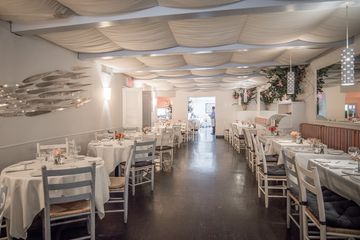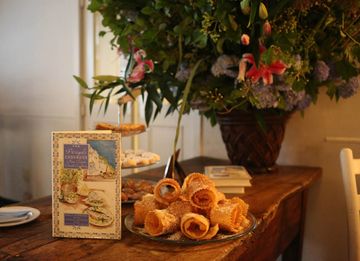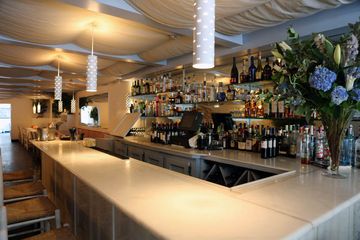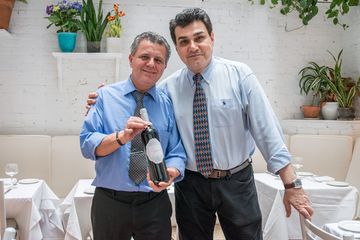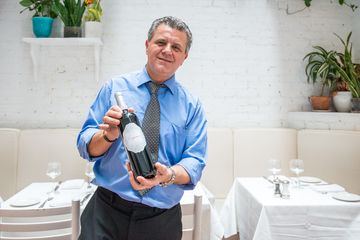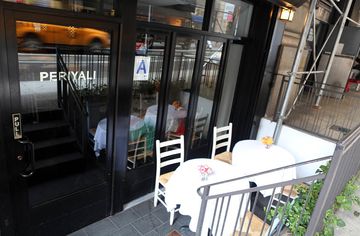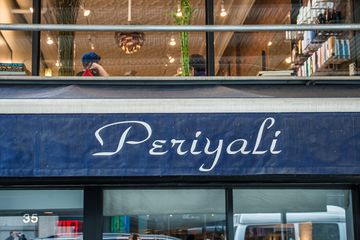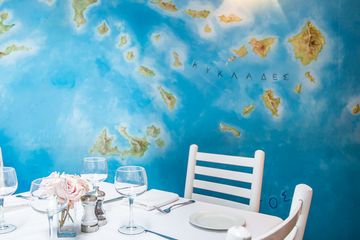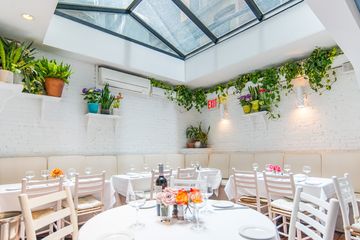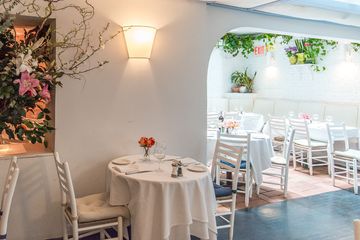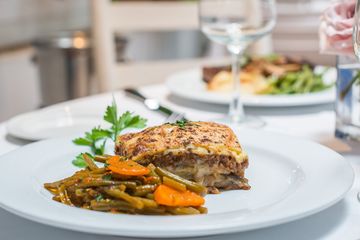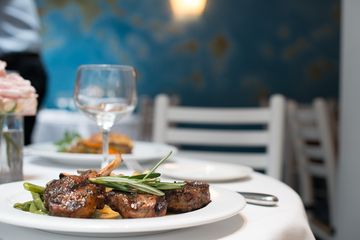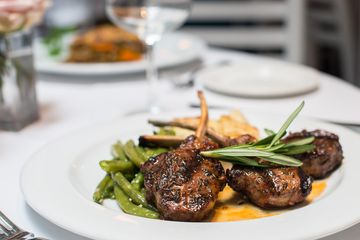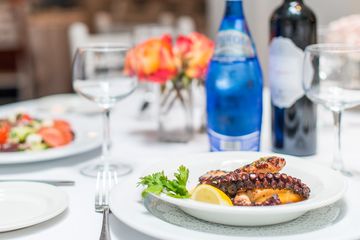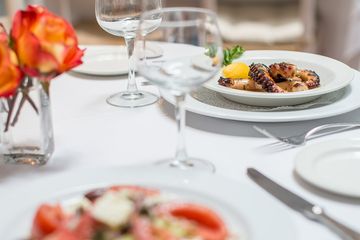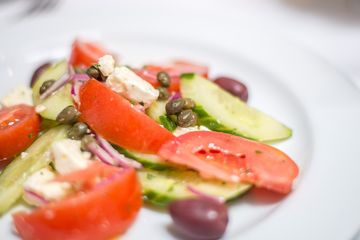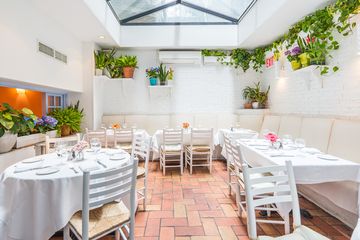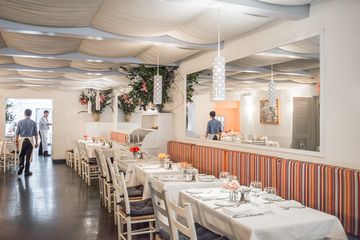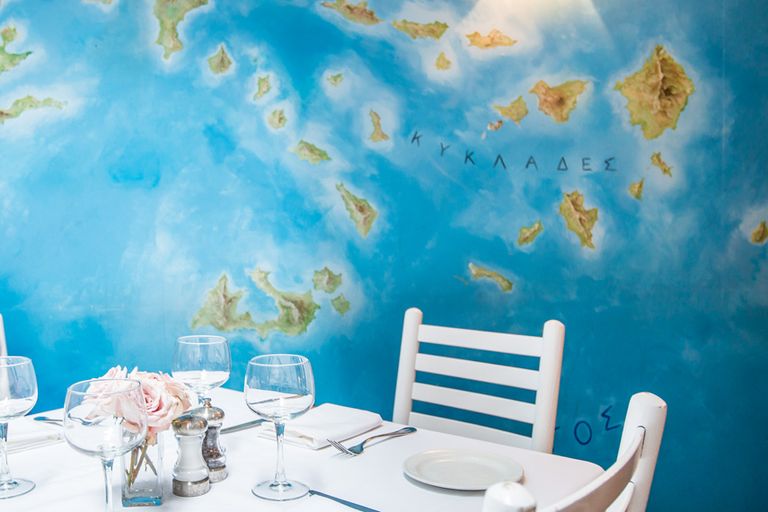
Any time of year is the perfect time to take advantage of the light-filled, planted patio at Periyali. This lovely, airy, authentic Greek restaurant evokes the classic white stucco charm and warm breeziness of the Aegean Islands. Charcoal grilled, simply dressed seafood and fish, delicious salads, braised lamb, and hearty moussakas are presented by a delightful staff with background music that creates the perfect setting for dining. Opened in 1987, Periyali was one of the first Greek establishments in Manhattan to feature exclusive fine Greek wines and each dish served can be complemented by their extensive list.
Nicola Kotsoni and Steve Tzolis have two successful stories to tell of restaurants on the side streets of Manhattan. The other is the lovely Il Cantinori on 10th Street that has been serving authentic Italian food since 1983. Periyali also boasts some of the most loyal and exuberant employees in the restaurant business. The Manhattan Sideways team met Mack, a waiter who says he “comes with the building.” He has been with the restaurant since day one, and because of that, he knows the face of every regular and has his finger on the pulse of the restaurant. He told us about when Periyali first opened, and the area was one of the worst neighborhoods in the city. Employees from the nearby publishing companies would come for lunch, but otherwise, the restaurant was fairly empty. After Mayor Giuliani helped improve the Chelsea/Gramercy area, a considerable number of regular customers began dining at Periyali. Mack went on to say that he is surprised that the restaurant’s neighborhood is now considered as “chichi” as the Upper East Side. These days, he serves clientele “from South Carolina to Dubai.” When asked about the article in the February 2015 Wall Street Journal, Mack commented that he appreciated better than most the effect that the favorable review would have. Not only did he notice a torrent of new faces, but the restaurant completely sold out of octopus, a dish pictured in the writeup and considered to be one of the most popular.
The Manhattan Sideways team sampled the highly regarded octopus, which had a crispy texture and a pleasant barbecue flavor, delicately sprinkled with lemon. The lamb chops were tender and cooked to perfection, as was the moussaka, a warm dish that was heavenly on a cold day. I, of course, reveled in the simply dressed, yet excellent, Greek salad.
From Periyali’s oldest employee, we continued our conversation with one of its newest members, Florence Deniau. Heading up their PR team, we teased out her fascinating history. Originally from Paris, she is well traveled, and has lived everywhere from Los Angeles to Beirut - and is currently residing happily in Harlem. She was quite pleased to boast of the magnificent floral arrangements in both this restaurant and Il Cantinori, as it is Nicola, herself, who is responsible for these. Florence is an example of the extraordinary people we continue to meet while walking on the side streets. There is no doubt that with her worldliness, warm and friendly personality, that she is the latest asset to the Periyali family.

